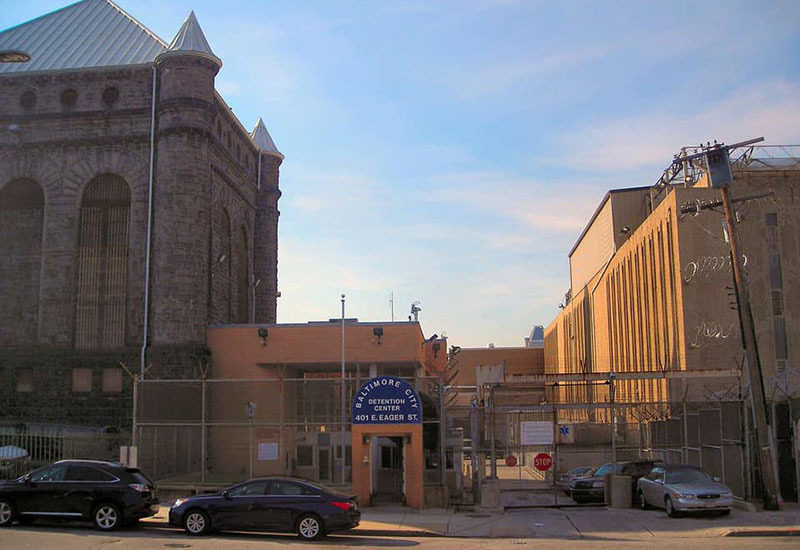
A few weeks ago, a friend texted Baltimore activist Kelly Cross a photo of an advertisement for the shuttered Eastern State Penitentiary in Philadelphia, urging people to come visit what has since been turned into a tourist attraction. The irony, as Cross notes, is that the ad in question is about six blocks away from the Baltimore City Detention Center, located off Interstate 83 in the Mount Vernon area.
Recently, plans were announced surrounding its demolition, along with a proposed subsequent substance abuse and mental health rehabilitation center for inmates in its place. Cross and other critics of the move see a grander vision for what could be done with the space—a Philadelphia-like model, for instance.
“It seems a lot of times Baltimoreans are just somehow willing to allow things to happen that should not or would not happen in other cities,” Cross says. “Nowadays you don’t put a massive correctional facility smack dab in the middle of your town.”
It’s important to note that those who might criticize this decision take issue with the location in which it’s happening, and not necessarily the practice itself. Before it was closed, the Baltimore City Detention Center held inmates serving short sentences and those awaiting trial. It’s a building that dates back to the Civil War, and there is a historical preservation angle that objectors feel is being ignored. Cross sees ways to capitalize on the city’s history and turn a jail with a less-than-storied history into a net positive.
“It’s a massive lost opportunity,” Cross says. “There are plenty of other places in the city that don’t have the same strategic and economic value to the viability of Baltimore where you can have those activities. There are facilities where these people can be held and these services can be administered. That’s a laudable goal and we can find plenty of places to do that, but taking demolishing irreplaceable history to make that happen—that’s where I start scratching my head.”
The other side of this, of course, is what is going to be done with the space. While there is dissent, there is not much contention with the idea of doing what is best for prisoners.
“One of the real tragedies of our system, when it gets overcrowded, is that the vast majority of people that were in this detention center were awaiting trial,” says Dr. Gary LaFree, professor and chair of the University of Maryland’s Criminology & Criminal Justice Department. “They hadn’t been convicted yet. If ever there were a group of people that you would want to isolate from the worst problems of prison it would be this group. Particularly for this population, an emphasis on rehabilitation or humane treatment is especially important.”
LaFree acknowledges Cross’ side of the argument, that yes, perhaps there are better uses for a specific facility than another prison or rehabilitation center. “Obviously it’s not as positive as a recreation center or a library,” he says. “Prisons are not the whole solution to [crime problems in Baltimore], but I think they might be regarded as part of the solution.”
Another side to this debate are the questions surrounding building another center at all. Prisons are expensive to maintain and run, and building another one brings about reservations regarding utility and whether a reconstruction on this site is a viable solution.
“It’s a situation where I think the best evidence suggests that prisons do have an impact on reducing crime, but they come at a pretty high cost,” LaFree says. There is some evidence that our incarceration rates have been falling and we’re not seeing a rise in crime.”
Ultimately, nothing has been done yet, and while plans have been announced, Cross is hopeful that he might be able to appeal to the powers that be and get those in charge to see things his way.
“There are lots of places to help prisoners,” Cross says. “It’s not like we’re some landlocked city where we don’t have plenty of available land to help prisoners. I think it’s about taking the path of least resistance.”